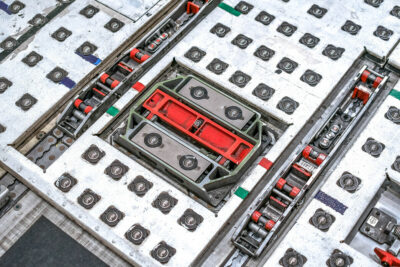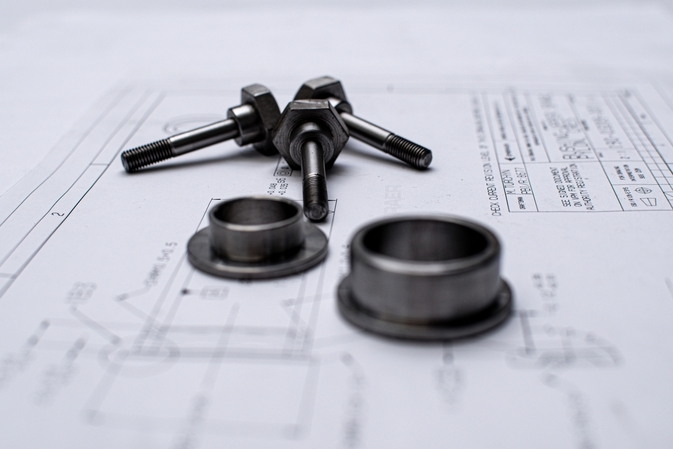MODULE 3 – ELECTRICAL FUNDAMENTALS – exam only
Delivery methods: classroom only
Group Size: limited up to 15 [PL]
Language: polish
Taking the Exam
Exams will be held starting at 11:00 AM in the Zephirius building (4th floor) at GTC or on the LOTAMS premises.
In the examination room, aside from your identification, a pen, and tests on the desks, nothing else can be placed.
After completing the exam, the filled-out test must be submitted to the examiner.
End of Examination
Upon completion of the exam, candidates are obligated to vacate their stations in the examination room and the training infrastructure as quickly as possible.
Information regarding the exam results will be provided either by phone or email after verifying identification details
Duration of exam:
Category B1: 52 multi-choice and 0 essay questions. Time allowed 65 minutes.
Category B2: 52 multi-choice and 0 essay questions. Time allowed 65 minutes.
Content:
3.1 Electron Theory
- Structure and distribution of electrical charges within: atoms, molecules, ions, compounds;
- Molecular structure of conductors, semiconductors and insulators.
3.2 Static Electricity and Conduction
- Static electricity and distribution of electrostatic charges;
- Electrostatic laws of attraction and repulsion;
- Units of charge, Coulomb's Law;
- Conduction of electricity in solids, liquids, gases and a vacuum.
3.3 Electrical Terminology
- The following terms, their units and factors affecting them: potential difference, electromotive force, voltage, current, resistance, conductance, charge, conventional current flow, electron flow.
3.4 Generation of Electricity
- Production of electricity by the following methods: light, heat, friction, pressure, chemical action, magnetism and motion.
3.5 DC Sources of Electricity
- Construction and basic chemical action of: primary cells, secondary cells, lead acid cells, nickel cadmium cells, other alkaline cells;
- Cells connected in series and parallel;
- Internal resistance and its effect on a battery;
- Construction, materials and operation of thermocouples;
- Operation of photo-cells.
3.6 DC Circuits
- Ohms Law, Kirchoff's Voltage and Current Laws;
- Calculations using the above laws to find resistance, voltage and current;
- Significance of the internal resistance of a supply.
3.7 Resistance/Resistor
(a)
- Resistance and affecting factors;
- Specific resistance;
- Resistor colour code, values and tolerances, preferred values, wattage ratings;
- Resistors in series and parallel;
- Calculation of total resistance using series, parallel and series parallel combinations;
- Operation and use of potentiometers and rheostats;
- Operation of Wheatstone Bridge;
(b)
- Positive and negative temperature coefficient conductance;
- Fixed resistors, stability, tolerance and limitations, methods of construction;
- Variable resistors, thermistors, voltage dependent resistors;
- Construction of potentiometers and rheostats;
- Construction of Wheatstone Bridge.
3.8 Power
- Power, work and energy (kinetic and potential);
- Dissipation of power by a resistor;
- Power formula;
- Calculations involving power, work and energy.
3.9 Capacitance/Capacitor
- Operation and function of a capacitor;
- Factors affecting capacitance area of plates, distance between plates, number of plates, dielectric and dielectric constant, working voltage, voltage rating;
- Capacitor types, construction and function;
- Capacitor colour coding;
- Calculations of capacitance and voltage in series and parallel circuits;
- Exponential charge and discharge of a capacitor, time constants;
- Testing of capacitors.
3.10 Magnetism
(a)
- Theory of magnetism;
- Properties of a magnet;
- Action of a magnet suspended in the Earth's magnetic field;
- Magnetisation and demagnetisation;
- Magnetic shielding;
- Various types of magnetic material;
- Electromagnets construction and principles of operation;
- Hand clasp rules to determine: magnetic field around current carrying conductor;
(b)
- Magnetomotive force, field strength, magnetic flux density, permeability, hysteresis loop, retentivity, coercive force reluctance, saturation point, eddy currents;
- Precautions for care and storage of magnets.
3.11 Inductance/Inductor
- Faraday's Law;
- Action of inducing a voltage in a conductor moving in a magnetic field;
- Induction principles;
- Effects of the following on the magnitude of an induced voltage: magnetic field strength, rate of change of flux, number of conductor turns;
- Mutual induction;
- The effect the rate of change of primary current and mutual inductance has on induced voltage;
- Factors affecting mutual inductance: number of turns in coil, physical size of coil, permeability of coil, position of coils with respect to each other;
- Lenz's Law and polarity determining rules;
- Back emf, self induction;
- Saturation point;
- Principle uses of inductors.
3.12 DC Motor/Generator Theory
- Basic motor and generator theory;
- Construction and purpose of components in DC generator;
- Operation of, and factors affecting output and direction of current flow in DC generators;
- Operation of, and factors affecting output power, torque, speed and direction of rotation of DC motors;
- Series wound, shunt wound and compound motors;
- Starter Generator construction.
3.13 AC Theory
- Sinusoidal waveform: phase, period, frequency, cycle;
- Instantaneous, average, root mean square, peak, peak to peak current values and calculations of these values, in relation to voltage, current and power;
- Triangular/Square waves;
- Single/3 phase principles.
3.14 Resistive (R), Capacitive (C) and Inductive (L) Circuits
- Phase relationship of voltage and current in L, C and R circuits, parallel, series and series parallel;
- Power dissipation in L, C and R circuits;
- Impedance, phase angle, power factor and current calculations;
- True power, apparent power and reactive power calculations.
3.15 Transformers
- Transformer construction principles and operation;
- Transformer losses and methods for overcoming them;
- Transformer action under load and no-load conditions;
- Power transfer, efficiency, polarity markings;
- Calculation of line and phase voltages and currents;
- Calculation of power in a three phase system;
- Primary and Secondary current, voltage, turns ratio, power, efficiency;
- Auto transformers.
3.16 Filters
- Operation, application and uses of the following filters: low pass, high pass, band pass, band stop.
3.17 AC Generators
- Rotation of loop in a magnetic field and waveform produced;
- Operation and construction of revolving armature and revolving field type AC generators;
- Single phase, two phase and three phase alternators;
- Three phase star and delta connections advantages and uses;
- Permanent Magnet Generators.
3.18 AC Motors
- Construction, principles of operation and characteristics of: AC synchronous and induction motors both single and polyphase;
- Methods of speed control and direction of rotation;
- Methods of producing a rotating field: capacitor, inductor, shaded or split pole.
Who should attend: Technical personnel in aircraft maintenance or engineering.
Standard: EASA Part 66 (APPENDIX TO ANNEX III) / EASA Part 147
Prerequisites:
A background in commercial aviation together with a general awareness of the regulatory
is an advantage.
Exam completion Standard:
Exam pass mark: minimum 75%.
Exam type: multiple-choice questions.
Certification:
Certificate of recognition
Additional information
| Date picker | 2025.12.17 B1, 2026.01.29 B1/B2, 2026.02.05 B1/B2, 2026.03.17 B1/B2 |
|---|




